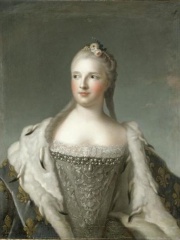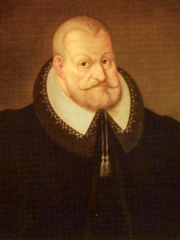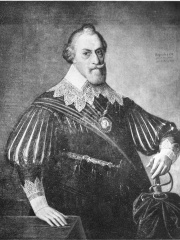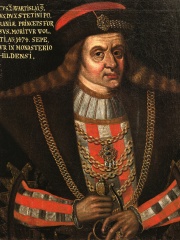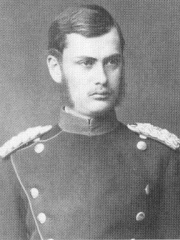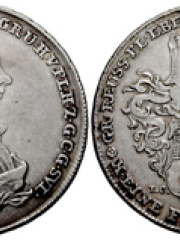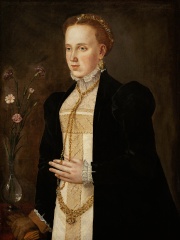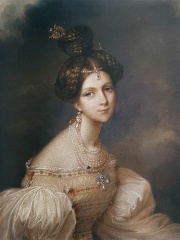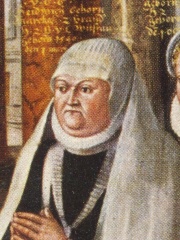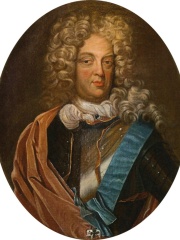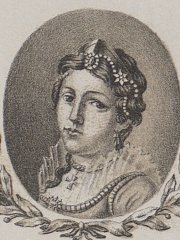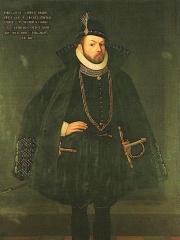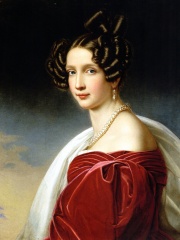
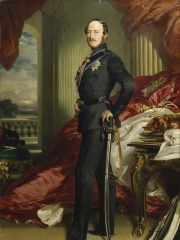
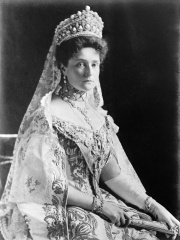
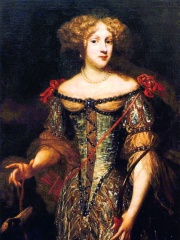
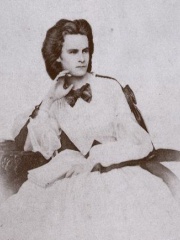
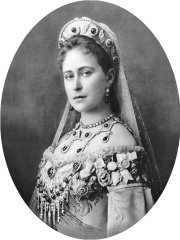

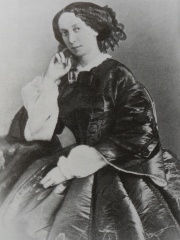
The Most Famous
NOBLEMEN from Germany
Top 10
The following people are considered by Pantheon to be the top 10 most legendary German Noblemen of all time. This list of famous German Noblemen is sorted by HPI (Historical Popularity Index), a metric that aggregates information on a biography’s online popularity. Visit the rankings page to view the entire list of German Noblemen.

1. Princess Sophie of Bavaria (1805 - 1872)
With an HPI of 72.45, Princess Sophie of Bavaria is the most famous German Nobleman. Her biography has been translated into 31 different languages on wikipedia.
Princess Sophie of Bavaria (Sophie Friederike Dorothea Wilhelmine; 27 January 1805 – 28 May 1872) was the daughter of King Maximilian I Joseph of Bavaria and his second wife, Caroline of Baden. The identical twin sister of Queen Maria Anna of Saxony, Sophie became Archduchess of Austria by marriage to Archduke Franz Karl of Austria. Her eldest son, Franz Joseph, reigned as Emperor of Austria and King of Hungary; her second son, Maximilian, briefly reigned as Emperor of Mexico.

2. Albert, Prince Consort (1819 - 1861)
With an HPI of 71.09, Albert, Prince Consort is the 2nd most famous German Nobleman. His biography has been translated into 61 different languages.
Prince Albert of Saxe-Coburg and Gotha (Franz August Karl Albert Emanuel; 26 August 1819 – 14 December 1861) was the husband and consort of the British monarch, Queen Victoria. They were married from 10 February 1840 until his death in 1861. Albert was born in the Saxon duchy of Saxe-Coburg-Saalfeld to a family connected to many of Europe's ruling monarchs. At the age of 20, he married Victoria, his cousin, with whom he went on to have nine children. Initially, he felt constrained by his role as consort, which did not afford him power or responsibilities. He gradually developed a reputation for supporting public causes, such as educational reform and the abolition of slavery worldwide, and he was entrusted with running the Queen's household, office and estates. He was heavily involved with the organisation of the Great Exhibition of 1851, which was a resounding success. Victoria came to depend more and more on Albert's support and guidance. He aided the development of Britain's constitutional monarchy by persuading his wife to be less partisan in her dealings with the British Parliament, but he actively disagreed with the interventionist foreign policy pursued during Lord Palmerston's tenure as Foreign Secretary. Albert died in 1861 at age 42, devastating Victoria so much that she entered into a deep state of mourning and wore black for the rest of her life. On her death in 1901, their eldest son succeeded as Edward VII, the first British monarch of the House of Saxe-Coburg and Gotha, named after the ducal house to which Albert belonged.

3. Alexandra Feodorovna (1872 - 1918)
With an HPI of 70.36, Alexandra Feodorovna is the 3rd most famous German Nobleman. Her biography has been translated into 56 different languages.
Alexandra Feodorovna (Russian: Александра Фёдоровна; 6 June [O.S. 25 May] 1872 – 17 July 1918), Princess Alix of Hesse and by Rhine at birth, was the last Empress of Russia as the consort of Emperor Nicholas II from their marriage on 26 November [O.S. 14 November] 1894 until his forced abdication on 15 March [O.S. 2 March] 1917. A favourite granddaughter of Queen Victoria of the United Kingdom, she was, like her grandmother, one of the most famous royal carriers of haemophilia and bore a haemophiliac heir, Alexei Nikolaevich, Tsarevich of Russia. Her reputation for encouraging her husband's resistance to the surrender of autocratic authority and her known faith in the Russian mystic Grigori Rasputin severely damaged her popularity and that of the Romanov monarchy in its final years. She and her immediate family were all murdered while in Bolshevik captivity in 1918, during the Russian Revolution. In 2000, the Russian Orthodox Church canonized her as Saint Alexandra the Passion Bearer.

4. Elizabeth Charlotte, Madame Palatine (1652 - 1722)
With an HPI of 68.51, Elizabeth Charlotte, Madame Palatine is the 4th most famous German Nobleman. Her biography has been translated into 34 different languages.
Madame Elizabeth Charlotte, Duchess of Orléans (born Princess Elizabeth Charlotte of the Palatinate, German: Elisabeth Charlotte; 27 May 1652 – 8 December 1722), also known as Liselotte von der Pfalz, was a German member of the House of Wittelsbach who married into the French royal family. She was the second wife of Monsieur Philippe I, Duke of Orléans (younger brother of Louis XIV of France). By Philippe, Liselotte was the mother of Philippe II, Duke of Orléans, and Élisabeth Charlotte, Duchess of Lorraine. Philippe II was France's ruler during the Regency. Liselotte gained literary and historical importance primarily through preservation of her correspondence, which is of great cultural and historical value due to her sometimes very blunt descriptions of French court life and is today one of the best-known German-language texts of the Baroque period. Liselotte not only became the ancestress of the House of Orléans, which came to the French throne with Louis Philippe I, the so-called "Citizen King" from 1830 to 1848, but also became the ancestress of numerous European royal families, so she was also called the "Grandmother of Europe". Through her daughter she was the grandmother of Francis I, Holy Roman Emperor, the husband of Maria Theresa, and great-grandmother of Joseph II and Leopold II (both Holy Roman Emperors) and Marie Antoinette, the last Queen of France before the French Revolution.
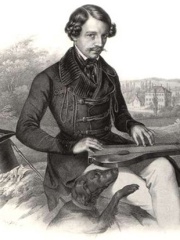
5. Duke Maximilian Joseph in Bavaria (1808 - 1888)
With an HPI of 68.38, Duke Maximilian Joseph in Bavaria is the 5th most famous German Nobleman. His biography has been translated into 26 different languages.
Duke Maximilian Joseph of Bavaria (4 December 1808 – 15 November 1888), known informally as Max in Bayern, was a member of a junior branch of the royal House of Wittelsbach who were Kings of Bavaria, and a promoter of Bavarian folk-music. He is most famous today as the father of Empress Elisabeth of Austria ("Sisi") and great-grandfather of King Leopold III of Belgium.

6. Duchess Helene in Bavaria (1834 - 1890)
With an HPI of 68.01, Duchess Helene in Bavaria is the 6th most famous German Nobleman. Her biography has been translated into 22 different languages.
Duchess Helene in Bavaria (Helene Caroline Therese; 4 April 1834 – 16 May 1890), nicknamed Néné, was the Hereditary Princess of Thurn and Taxis as the wife of Maximilian Anton Lamoral. She was a Duchess in Bavaria by birth as the daughter of Duke Maximilian Joseph and Princess Ludovika. She was temporarily the head of the Thurn and Taxis family. In 1858, Helene married Maximilian Anton, Hereditary Prince of Thurn and Taxis. After nearly nine years of marriage, Maximillian died due to a chronic kidney disease, leaving the Thurn and Taxis throne into the hands of Helene until their son reached majority.

7. Princess Elisabeth of Hesse and by Rhine (1864 - 1918)
With an HPI of 67.71, Princess Elisabeth of Hesse and by Rhine is the 7th most famous German Nobleman. Her biography has been translated into 40 different languages.
Grand Duchess Elizabeth Feodorovna of Russia (born Princess Elisabeth of Hesse and by Rhine; 1 November 1864 – 18 July 1918) was a German Hessian and Rhenish princess of the House of Hesse-Darmstadt, and the wife of Grand Duke Sergei Alexandrovich of Russia, the fifth son of Emperor Alexander II of Russia and Princess Marie of Hesse and by Rhine. A granddaughter of Queen Victoria and an older sister of Alexandra, the last Russian Empress, Elisabeth became famous in Russian society for her dignified beauty and charitable works among the poor. After the Socialist Revolutionary Party's Combat Organization assassinated her husband with a bomb in 1905, Elisabeth publicly forgave Sergei's murderer, Ivan Kalyayev, and campaigned without success for him to be pardoned. She then departed the Imperial Court and became a nun, founding the Marfo-Mariinsky Convent dedicated to helping the downtrodden of Moscow. In 1918, she was arrested and ultimately killed by Bolsheviks. In 1981, she was canonized by the Russian Orthodox Church Abroad, and in 1992 by the Moscow Patriarchate.

8. Prince Claus of the Netherlands (1926 - 2002)
With an HPI of 67.61, Prince Claus of the Netherlands is the 8th most famous German Nobleman. His biography has been translated into 39 different languages.
Prince Claus of the Netherlands, Jonkheer van Amsberg (born Klaus-Georg Wilhelm Otto Friedrich Gerd von Amsberg; 6 September 1926 – 6 October 2002) was Prince of the Netherlands from 30 April 1980 until his death in 2002 as the husband of Queen Beatrix.

9. Maria Alexandrovna (1824 - 1880)
With an HPI of 67.51, Maria Alexandrovna is the 9th most famous German Nobleman. Her biography has been translated into 37 different languages.
Maria Alexandrovna (Russian: Мария Александровна), born Princess Wilhelmine Marie of Hesse and by Rhine (8 August 1824 – 3 June 1880), was Empress of Russia as the first wife of Emperor Alexander II. Legally the daughter of Ludwig II, Grand Duke of Hesse, and of Princess Wilhelmine of Baden, she was given a good education and raised in relative austerity, with an emphasis on simplicity, piety and domesticity. Her mother died when Marie was only twelve, and when she was fourteen, she caught the eye of Tsesarevich Alexander Nikolaevich, who was visiting her father's court while making his Grand tour of Western Europe. The couple were married after Marie turned sixteen. The new tsesarevna did not initially enjoy court life because of her withdrawn nature, and the fact that she found the splendor and extravagance of the Russian court daunting after the frugality that she was accustomed to. Marie soon grew to identify strongly with her adopted country, and her young age at marriage facilitated this adoption. After the death of her father-in-law, Nicholas I, in 1855, Alexander and, now known as Maria, she became emperor and empress consort of Russia. After the death of her mother-in-law in 1860, Maria took on a greater role in public life. She became one of the founders of the Russian Red Cross Society, part of the International Red Cross Movement which was founded in 1863 to promote nursing and medical care across the world. She also established Russia's first all-female schools. She gave her husband strong moral support as he navigated the legislations to end serfdom. She also interested herself in the arts: The Mariinsky Theatre in Saint Petersburg and the Mariinskyi Palace were built under her patronage and named after her. Despite identifying strongly with Russia and Russian interests, she visited her native Hesse regularly every year from the early 1860s onward, and kept in touch with her own family, as also with her husband's relatives across Europe. She suffered from tuberculosis from 1863 onwards and spent long periods of time in southern Europe to avoid the harsh winters of Russia. Her health worsened after the death of her eldest son, Nicholas Alexandrovich, who died just before the date of his intended wedding. She was noted for her wisdom and intellect, and her generous devotion to family, including her husband's mistress and her children.
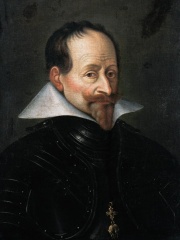
10. Maximilian I, Elector of Bavaria (1573 - 1651)
With an HPI of 66.70, Maximilian I, Elector of Bavaria is the 10th most famous German Nobleman. His biography has been translated into 44 different languages.
Maximilian I (17 April 1573 – 27 September 1651), occasionally called the Great, a member of the House of Wittelsbach, ruled as Duke of Bavaria from 1597. His reign was marked by the Thirty Years' War during which he obtained the title of a Prince-elector of the Holy Roman Empire at the 1623 Diet of Regensburg. Maximilian was a capable monarch who, by overcoming the feudal rights of the local estates (Landstände), laid the foundations for absolutist rule in Bavaria. A devout Catholic, he was one of the leading proponents of the Counter-Reformation and founder of the Catholic League of Imperial Princes. In the Thirty Years' War, he was able to conquer the Upper Palatinate region, as well as the Electoral Palatinate affiliated with the electoral dignity of his Wittelsbach cousin, the "Winter King" Frederick V. The 1648 Peace of Westphalia affirmed his possession of Upper Palatinate and the hereditary electoral title, though it returned the Electoral Palatinate to Frederick's heir and created an eighth electoral dignity for them.
People
Pantheon has 284 people classified as German noblemen born between 900 and 1983. Of these 284, 2 (0.70%) of them are still alive today. The most famous living German noblemen include Prince Max, Duke in Bavaria, and Albert, 12th Prince of Thurn and Taxis. The most famous deceased German noblemen include Princess Sophie of Bavaria, Albert, Prince Consort, and Alexandra Feodorovna. As of April 2024, 58 new German noblemen have been added to Pantheon including Julius, Duke of Brunswick-Lüneburg, Bogislaw XIV, Duke of Pomerania, and Eric II, Duke of Pomerania.
Living German Noblemen
Go to all RankingsPrince Max, Duke in Bavaria
1937 - Present
HPI: 54.19
Albert, 12th Prince of Thurn and Taxis
1983 - Present
HPI: 39.31
Deceased German Noblemen
Go to all RankingsPrincess Sophie of Bavaria
1805 - 1872
HPI: 72.45
Albert, Prince Consort
1819 - 1861
HPI: 71.09
Alexandra Feodorovna
1872 - 1918
HPI: 70.36
Elizabeth Charlotte, Madame Palatine
1652 - 1722
HPI: 68.51
Duke Maximilian Joseph in Bavaria
1808 - 1888
HPI: 68.38
Duchess Helene in Bavaria
1834 - 1890
HPI: 68.01
Princess Elisabeth of Hesse and by Rhine
1864 - 1918
HPI: 67.71
Prince Claus of the Netherlands
1926 - 2002
HPI: 67.61
Maria Alexandrovna
1824 - 1880
HPI: 67.51
Maximilian I, Elector of Bavaria
1573 - 1651
HPI: 66.70
Maria Josepha of Saxony, Dauphine of France
1731 - 1767
HPI: 66.46
Albert, Duke of Prussia
1490 - 1568
HPI: 66.09
Newly Added German Noblemen (2024)
Go to all RankingsJulius, Duke of Brunswick-Lüneburg
1528 - 1589
HPI: 55.12
Bogislaw XIV, Duke of Pomerania
1580 - 1637
HPI: 54.97
Eric II, Duke of Pomerania
1418 - 1474
HPI: 54.74
Maximilian Maria, 7th Prince of Thurn and Taxis
1862 - 1885
HPI: 54.66
Heinrich XXIV, Count Reuss of Ebersdorf
1724 - 1779
HPI: 54.56
Philippine Welser
1527 - 1580
HPI: 54.47
Elisa Radziwiłł
1803 - 1834
HPI: 54.10
Susanna of Bavaria
1502 - 1543
HPI: 53.72
Hedwig of Brandenburg, Duchess of Brunswick-Wolfenbüttel
1540 - 1602
HPI: 53.49
Christian Ernst, Margrave of Brandenburg-Bayreuth
1644 - 1712
HPI: 53.46
Salomea of Berg
1093 - 1144
HPI: 53.28
John VII, Duke of Mecklenburg-Schwerin
1558 - 1592
HPI: 53.27
Overlapping Lives
Which Noblemen were alive at the same time? This visualization shows the lifespans of the 25 most globally memorable Noblemen since 1700.



